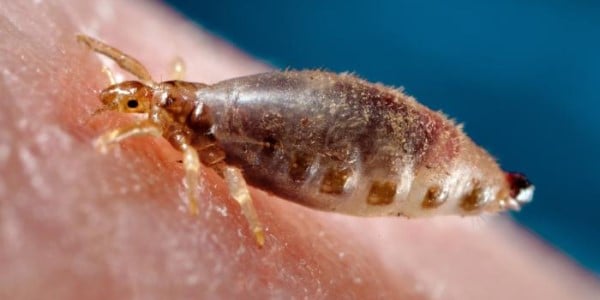Key points
- Louse-borne relapsing fever (LBRF) is caused by Borrelia recurrentis bacteria and transmitted to people by the human body louse and, rarely, the head louse.
- LBRF occurs in regions of Africa. Risk of infection in the United States is extremely unlikely if there was no travel to an endemic region.

Overview
LBRF epidemics occurred frequently in Europe during the early 20th century. Between 1919 and 1923, 13 million cases occurred in the social upheaval that overtook Russia and Eastern Europe, resulting in 5 million deaths. During World War II, around a million cases occurred in North Africa.
Risk of infection in the United States is extremely unlikely if there was no travel to an endemic region. LBRF causes sporadic illness and outbreaks in regions of Africa, including Ethiopia, Eritrea, and Somalia, and in congregate living settings in these regions. Illness can be severe, with reported mortality rates varying widely depending on social conditions, geography, and access to treatment.
Signs and symptoms
Infection with B. recurrentis may result in a wide range of nonspecific symptoms, such as:
- Fever
- Headache
- Chills or shakes
- Muscle and joint aches
- Nausea
Though the clinical symptoms of LBRF are similar to Soft Tick Relapsing Fever (STRF), LBRF is usually associated with fewer relapses.
Women who are pregnant are at high risk of pregnancy loss and may be at risk of more severe illness from LBRF.
Causes and spread
LBRF occurs in regions of Africa. It is caused by B. recurrentis, a spiral-shaped bacteria spread from person to person by the human body louse (Pediculus humanus humanus) and, rarely, the head louse (P. humanus capitis). Body lice become infected by feeding on infected people.
Transmission from louse to people typically occurs when an infected louse is crushed and the bacteria contaminate a bite wound or scratch.
LBRF outbreaks most commonly occur in overcrowded conditions and areas experiencing social disruption, such as refugee camps. No other animal hosts for B. recurrentis have been identified.
Prevention
Prevent infestations of body lice to prevent LBRF and other louse-borne infections:
- Promote access to personal hygiene services, such as showers and laundry services, especially in congregate shelters or for people who lack housing. Body lice are typically associated with crowded living conditions and limited access to personal hygiene, such as bathing and clean clothes.
- Do not share clothing, beds, bedding, or towels used by a person who might have body lice.
- When washing clothes or bedding that may be infested with body lice, use hot water above 130 degrees Fahrenheit (55 degrees Celsius) and dry on high heat to kill lice and their eggs.
- Treat louse infestations with a pediculicide, a medication to kill lice.
